Introduction:
When it comes to authentic Indian ethnic wear, Kota Doria World stands out for its exquisite collection of sarees and suits made from the traditional Kota Doria fabric.
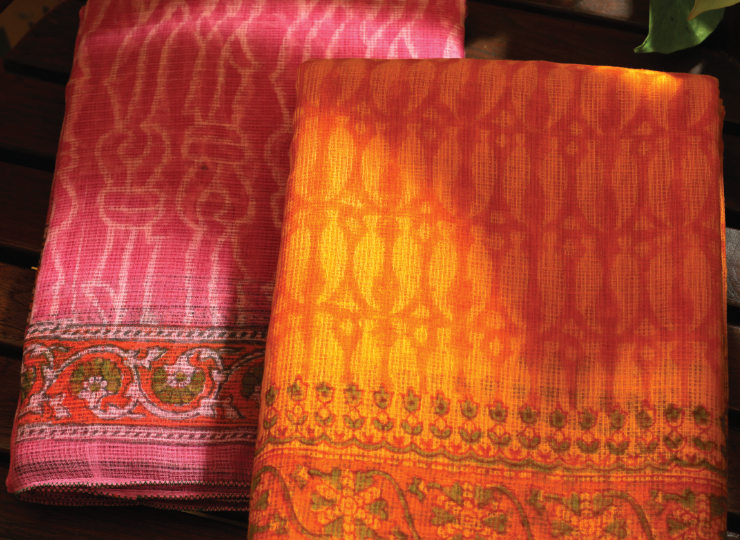
Located in Rajasthan, the Textile Heritage of the Heart of India, Kota Doria World brings you the best-prepared ethnic essence to wear. Kota Doria, often known as Kota Masuria, is a reputed handwoven fabric that is famous for its light, ventilated texture and complex square-checked patterns. Rising from the city of Kota in Rajasthan, this fabric has a rich history that is associated with the cultural and artistic heritage of the region.
History:
Kota Doria sarees, which are also known as Kota Masuria sarees in the down south, have a rich and intricate history that dates back to the Mughal times. These hand-knitted, airy, square-checkered sarees have been traditionally associated with the city of Palace, Mysore.
It was only during the term of the Mughals that this legacy of theirs had a significant transformation. It was the Mughal army general Rao Kishore Singh who got very intrigued by this technique, and he decided to take this knowledge as well as the technique to his homeland, and thus he shifted this exquisite craft from Mysore to Kota. Kaithun is the main weaving center according to the several documents. As there is no precise data about the beginning of Kota Doria craft, It is difficult to say in which period it started.
Motifs/Designs :
In recent years Kota Doria sarees has become more zari and design intensive giving them a luxurious edge-
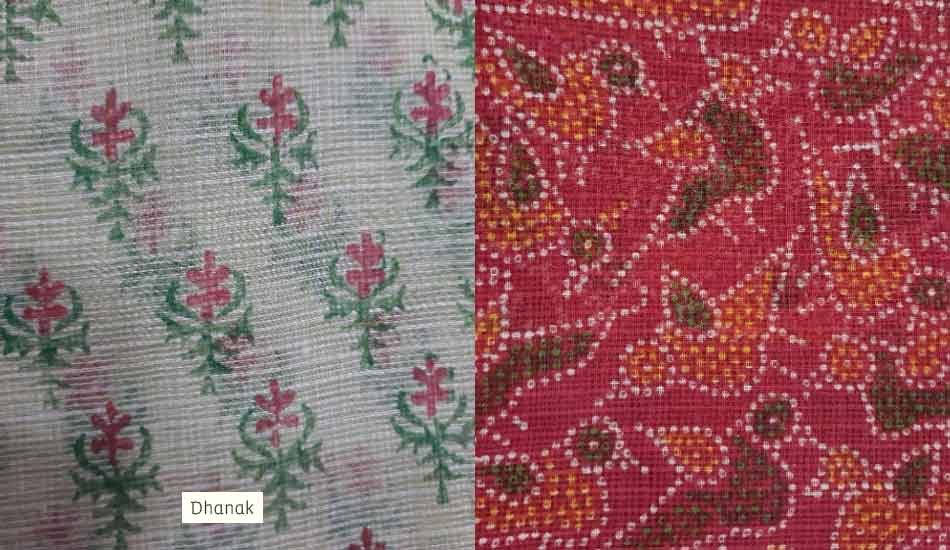
Floral figure Beauty (small floral twigs): common and delicate, scattered across the saree.
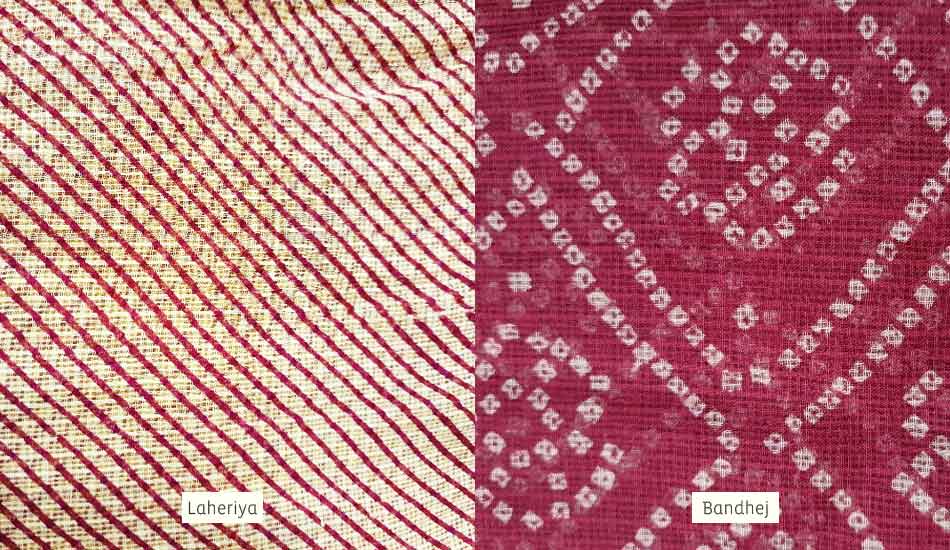
Bouquet and flower-petal motifs. Often woven or block-printed in pastels or vibrant colors.
Geometric pattern – Diamonds, zigzags, or other symmetric shapes to connect the subtle texture.
Nature-induced motifs like leaves, vines, birds (such as peacocks), and trees. Sometimes printed or hand-painted (in fusion design).
Paisley (Kalka) A traditional Indian figure resembles a mango or pear. Sometimes styling or joining with flowers for borders and palace.
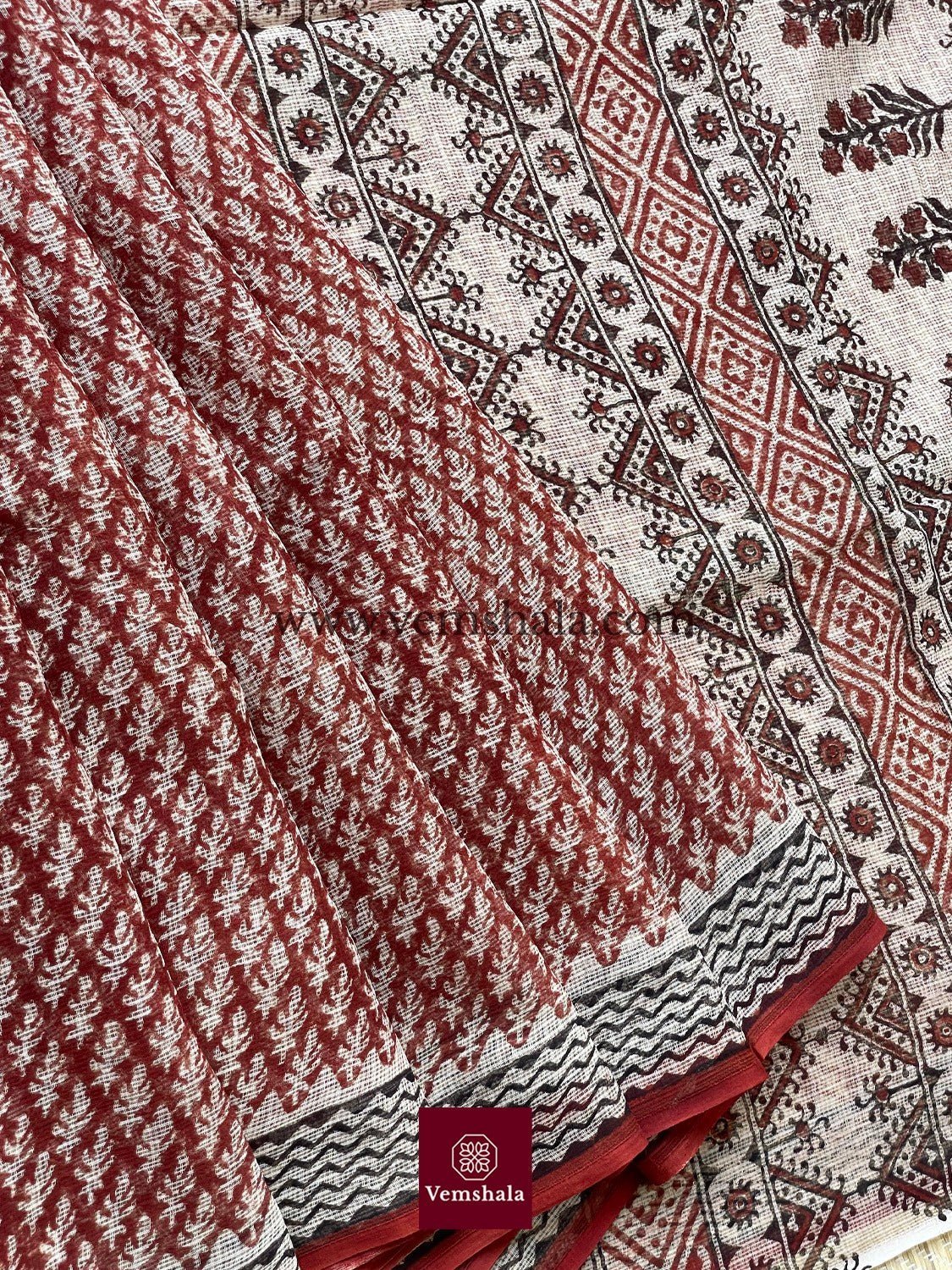
Traditional Rajasthani motifs Inspired by local heritage—elephants, palanquins, and camels. Often in Kota Doria, hand-block prints (e.g., Bagru or Sanganeri styles) are seen.
Gold and silver zari motifs during celebrations or bride ceremony is used in Kota Doria sarees. Borders may have zari wine, flowers, or temple boundaries. Flaws affecting motifs Handloom weave Block printing (Bagru, Sangneri) screen having Zari work embroidered on kota doria (modern adaptation).
Importance:
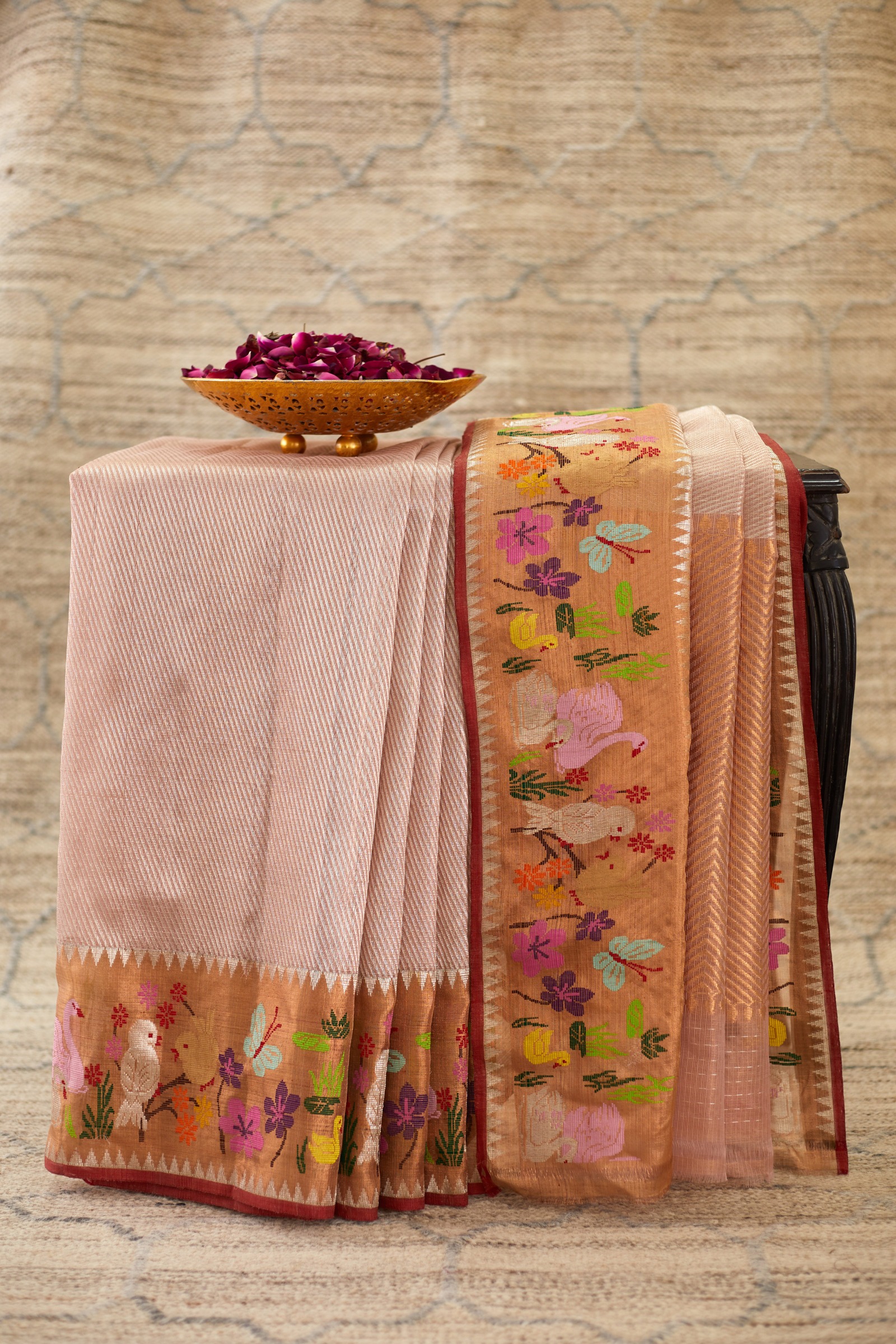
This fabric consists of cotton and silk as the main fibers/fabrics. This fabric is in high demand because it is light and airy, suitable for summer garments that are contingent on breezy summer days and sunny vibes.
Moreover, it is compelling to note that Kota Doria fabric, although it does contain silk, is providing wearers with such comfort, durability, and longevity to the point of people being able to hold on to their 70-year-old Kota Doria saree in this day and age.
This aspect can be attributed to the closely interwoven process of the saree, where the cotton yarn is tightly woven together to create a cording effect that is capable of absorbing stress. Stress is not transferred to the silk yarn.
With their aesthetic characteristics, which define the natural shape of women, and their glossy appearance, silk Kota sarees appear to add a level of sophistication. With the right accessories, you can wear these sarees for both casual and semi-formal occasions.
The government has awarded the GI Tag to Kota Doria sarees to distinguish it from the ones that are made on handlooms to power looms which can be seen at every edge.
In Contemporary Times:
Both Indian and international fashion designers are integrating various Kota Doria elements into their collections. These fabrics have made their way into the ramp as well.
Bibi Russell’s collection of Kota Doria crafts, “Fashion for Development,” for the Government of Rajasthan in 2015, told the story of her collaboration with weavers in the region. Her lively designs used a variety of tie-and-dye prints.

Traditional textiles were used for wrap skirts, palazzos, tonal weave sarees, dhoti pants, waistcoats, and kimono-style covers with a sense of heritage and had the bold and traditional folk prints. The menswear collection included leheriya, kurtas, jackets, sherwani, dhoti, and cuffed trousers, all finished with traditional Jodhpuri jewelry.
The application of Kanjivaram patterns on Kota Doria fabric is growing in momentum, particularly in southern Indian states, due to the comfort Kota Doria fabric provides in the hot and humid climate. Along with well-known designers, national award-winning master weavers from Kaithun have exhibited their sarees in fashion shows.
How to check the authenticity
The intricate designs and time-consuming process of producing Kota Doria sarees—one can see these following pointers to ensure that they have purchased the authentic ones:

Weave pattern: this is basically a square pattern that is very spaced throughout the fabric.
Transparency: The authentic Kota Doria fabric will be very sheer and transparent when held in light.
Texture: The original Kota Doria saree fabric is very lightweight, has a slightly rough texture, and is airy yet durable.
Challenges:
Today if you search for Kota Doria sarees on the internet, you will find images of many sites selling fabric, sarees, etc., but most of those products are basically the copies of power looms.
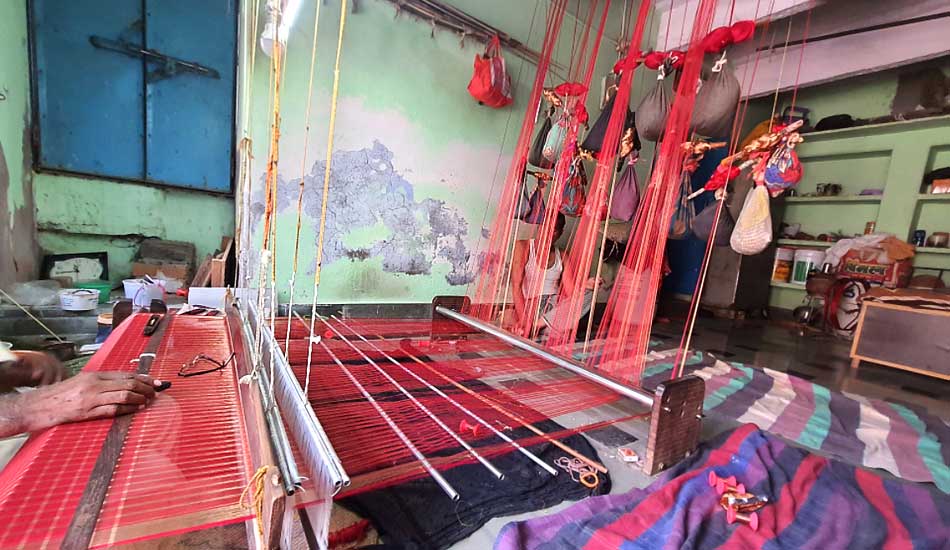
Today, more than 5000 women living in the small village of Kaithoon are facing tremendous and cutthroat competition from the so-called modern synthetic looms, which are cheap in price as well as quality. So the major challenges are the rising cost of raw materials, competition from other power looms, and the unavailability of raw materials.
There is an increasing need to create awareness among the people for its noble spirits. As there will be new technologies and machines, there will be more demand among the people, and they will find it more authentic and good quality.
Conclusion:
Kota Doria fabric is a special treasure, known for its lightness and elegant look. Its light weave and classic style ensure Kota is a preferred option when finding pleats, flare, or just something comfortable to wear. Kota Doria can meet your need for style and comfort, and because of the lightness and breathability, Kota Doria is a suitable option, especially during the hot Indian summer.
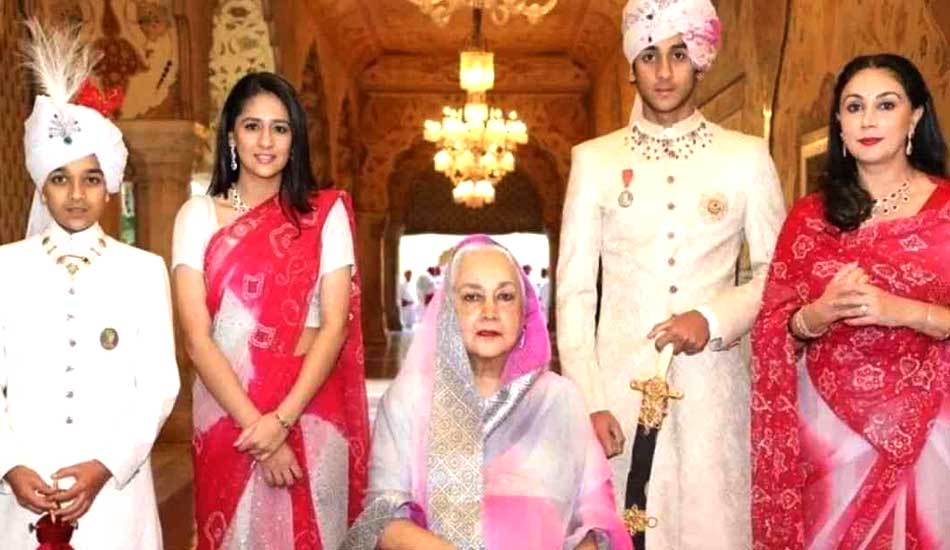
References:
https://www.houseofchikankari.in/blogs/blogs/kota-doria-a-unique-craft-that-originated-from-kota
THE LUMINOUS LEGACY OF KOTA DORIA: WEAVING TRADITION INTO MODERN GRACE
https://www.irjmets.com/uploadedfiles/paper/issue_2_february_2022/19382/final/fin_irjmets1646212190.pdf




